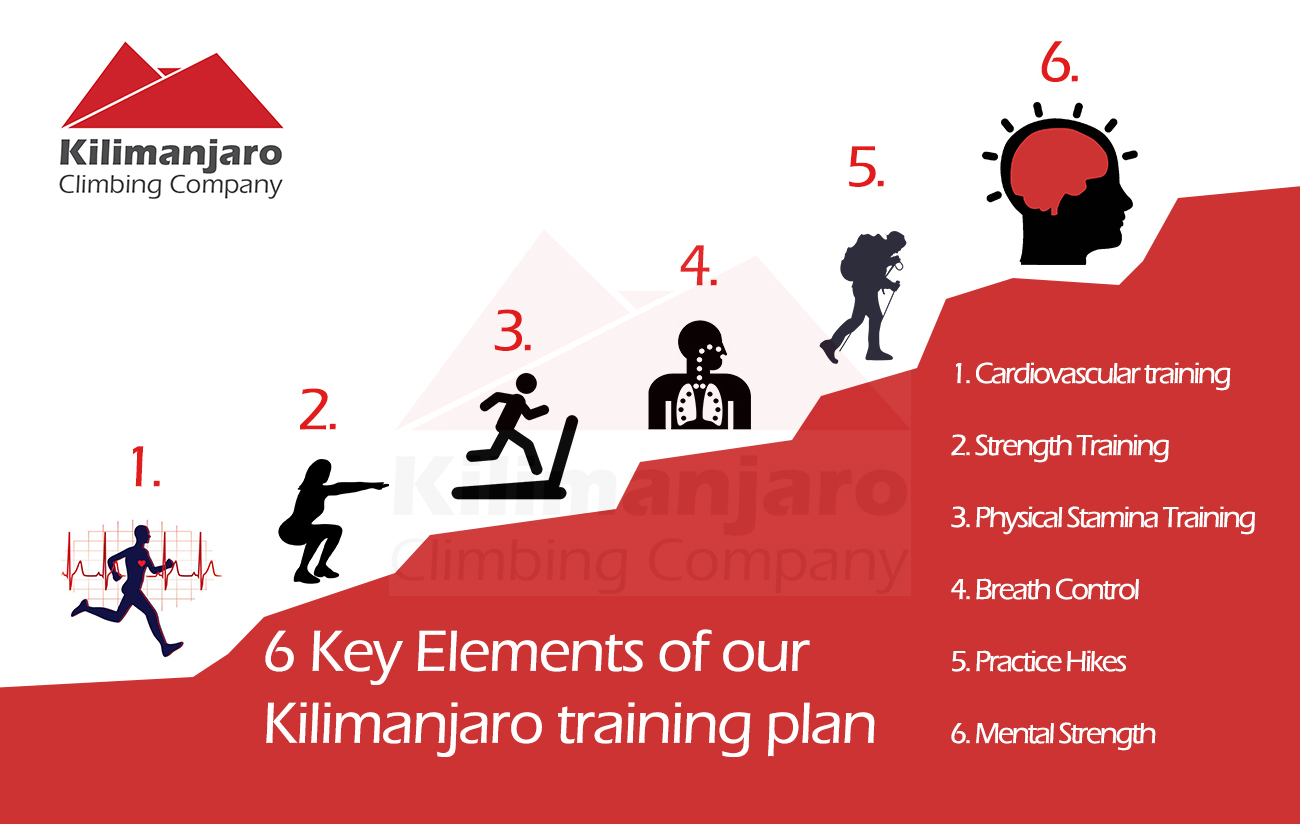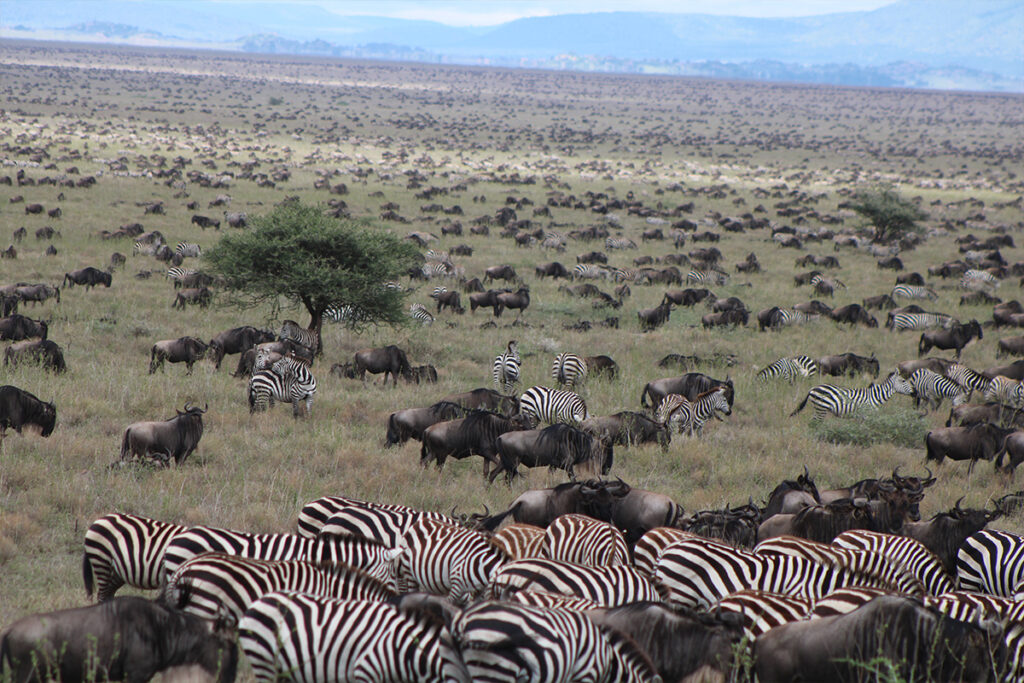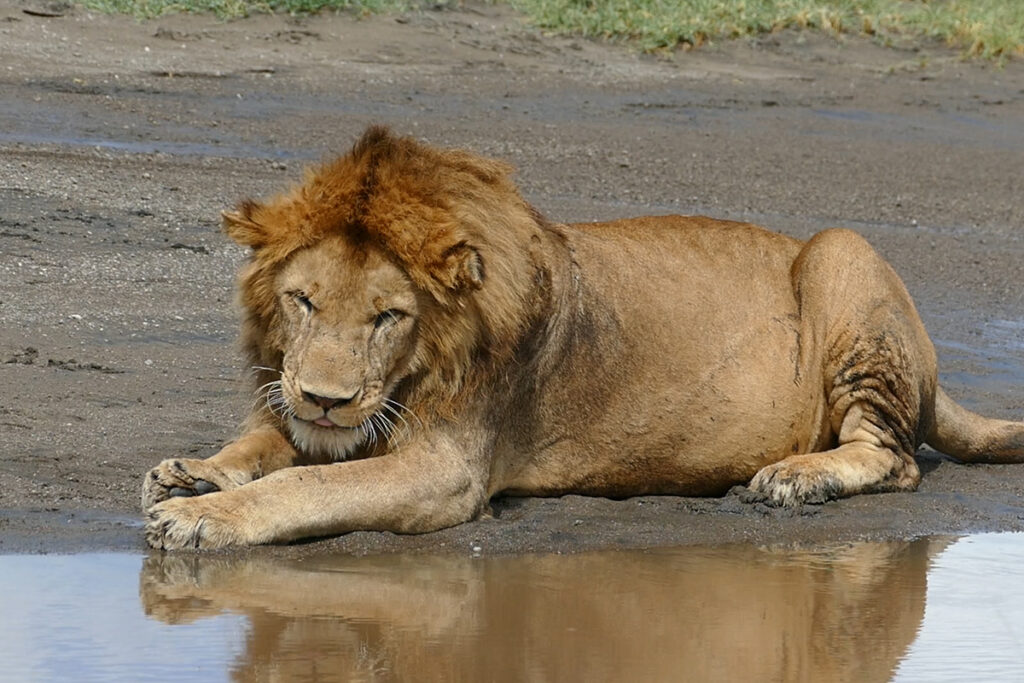Scaling Mount Kilimanjaro is not merely a test of endurance, it’s an intricate dance with one of the planet’s most iconic summits. Surprisingly, only about 65% of climbers successfully reach the peak, often due to insufficient physical preparation. Confronting this towering challenge demands more than just the intent; it requires meticulous conditioning of the body.
Physical preparation, vital for conquering Kilimanjaro, has evolved with enhanced training methods derived from decades of successful climbs. Strategies entail endurance training, strength building, and altitude acclimatization, ensuring climbers can withstand the mountain’s diverse demands. Experts emphasize integrating these elements into a tailored regimen, highlighting their substantial role in increasing summit success rates significantly.

Physical Preparation: Key to a Successful Kilimanjaro Climb
Tackling Mount Kilimanjaro requires more than just bravery. It’s crucial to prepare your body for the many challenges ahead. This includes building endurance, which helps you keep going even when you’re tired. Endurance training can involve long walks or runs. These activities condition your body to bear prolonged physical exertion.
A strong body is vital for a successful climb. To achieve this, focus on strength training exercises. Squats, lunges, and push-ups are excellent choices. They increase muscle strength, especially in legs and arms, which are essential for climbing. Consistent training prepares you for the physical demands of the mountain.
Altitude acclimatization plays a huge role in climbing success. It helps your body adjust to the lower oxygen levels found at higher elevations. Consider taking hikes at higher altitudes before your trip. This can help minimize the risk of altitude sickness. Creating a schedule that includes increased exposure to higher altitudes is beneficial.
Nutrition and hydration form the backbone of any successful climb. A balanced diet fuels your body with the energy it needs for trekking. Essential nutrients, such as proteins and carbohydrates, are vital. Drinking plenty of water is just as important. Proper hydration aids metabolism and enhances stamina during the hike.
Training For Kilimanjaro
The Importance of Physical Preparation for Kilimanjaro
Physical preparation for Kilimanjaro is crucial because the climb tests both your body and mind. Being fit allows you to handle the long days of hiking and the steep climbs. It reduces the risk of injury and ensures you enjoy the adventure. A fit body responds better to challenges. It also means you’ll recover faster from each day’s trek.
Training increases your stamina and helps you trek longer without feeling exhausted. It involves exercises like running and cycling. Activities such as these boost your aerobic capacity. Building stamina is not just about lasting longer; it’s about doing so comfortably. You’ll experience less strain, making the climb more enjoyable.
Strength is also a key aspect of preparation. Climbers need strong muscles to support themselves up steep paths. Incorporate exercises like squats and planks into your routine. These improve your core and lower body strength. With stronger muscles, you’ll climb easier and reduce the risk of strains.
Finally, being prepared means understanding how your body behaves at altitude. The higher you go, the less oxygen there is. Training at higher altitudes, if possible, can be beneficial. Practice breathing exercises to manage altitude changes. Adapting to these conditions increases your chances of reaching the summit.
Endurance Training Strategies for Kilimanjaro
Endurance training is pivotal for anyone aiming to conquer Kilimanjaro’s peaks. A good strategy starts with incorporating regular cardio exercises. Running, jogging, and brisk walking are excellent options. These activities strengthen your lungs and improve heart function. They also build the stamina necessary for long hours of hiking.
Interval training is another important strategy. It involves alternating between high-intensity and low-intensity workouts. This type of training increases your body’s efficiency in using energy. You can practice interval training by alternating fast-paced and slow-paced exercises. This helps the body adjust to varying mountain terrains.
Long-distance hikes are crucial to prepare for the trek. It’s essential to practice with different terrains that mimic Kilimanjaro’s trails. Weekly hikes with a gradual increase in distance will help. They condition your muscles and joints for the physical demands of the climb. Hiking also helps develop mental toughness and resilience.
Finally, integrating rest and recovery days into your plan is vital. Even though building endurance is crucial, rest helps your body repair and get stronger. Overtraining can lead to burnout or injury. Make sure to listen to your body and take breaks when needed. This balance ensures you are in peak condition for your climb.
Strength Building Exercises for Kilimanjaro Climbing
Building strength is crucial for climbing Kilimanjaro. Strong muscles offer better support and stability on the mountain. One effective exercise is the squat, which targets your legs and core. To do a squat, stand with your feet shoulder-width apart, then lower your body as if sitting. Stand back up and repeat to strengthen your thighs and glutes.
Lunges are another key exercise. They work your quads, hamstrings, and calves. Step forward with one leg, lower your hips, and make sure your knee doesn’t pass your toes. Push back to the starting position and switch legs. This ensures balanced muscle development.
Push-ups help strengthen the upper body, which is essential for using trekking poles. Keep your body straight as you lower your chest towards the ground. Push back up, focusing on your chest and arm muscles. Regular practice enhances endurance. It boosts your ability to handle the upper body strain of climbing.
Planks are great for core strength, vital for balance on uneven terrain. Start in a push-up position but with your forearms on the ground. Keep your body in a straight line. Hold this position to strengthen your abdomen and back. Add planks to your routine for improved stability.
Finally, incorporate some flexibility exercises. Yoga and stretching sessions can prevent injuries by maintaining muscle flexibility. They enhance your range of motion. Combining them with strength exercises offers a well-rounded fitness plan. The preparation increases your chances of a successful climb.
Altitude Acclimatization: An Essential Part of Training for Kilimanjaro
Altitude acclimatization is crucial when preparing for Kilimanjaro. The higher you climb, the less oxygen there is in the air. Your body needs time to adjust to these changes. Acclimatization helps prevent altitude sickness, which can cause headaches, nausea, and fatigue. Ensuring your body adjusts properly is key to a successful ascent.
An important strategy for acclimatization is the “climb high, sleep low” technique. This means hiking to higher elevations during the day and returning to lower altitudes to sleep. This practice helps your body adapt without overwhelming it. It also allows your lungs and heart to get used to operating with less oxygen. Incorporating this in your schedule increases your chances of a safe climb.
Hydration plays a significant role in acclimatization. Drinking plenty of water helps your body function better at high altitudes. Aim to stay fully hydrated throughout your trek. Water aids in oxygen transport and reduces the risk of dehydration. Dehydration can worsen the symptoms of altitude sickness.
| Symptoms | Prevention Tips |
|---|---|
| Headache | Stay hydrated, ascend gradually |
| Nausea | Eat light meals, avoid alcohol |
| Fatigue | Rest often, avoid overexertion |
Finally, practice breathing exercises to enhance oxygen intake. Techniques like deep breathing can increase your lung capacity. Breathing slowly and deeply helps circulate more oxygen into your bloodstream. These exercises can improve your overall breathing efficiency. Combining these practices with proper acclimatization ensures your body is ready for the challenge of Kilimanjaro.
The Role of Diet and Hydration in Climbing Kilimanjaro
Proper diet and hydration are key factors when climbing Kilimanjaro. A balanced diet fuels your body with the energy needed for long hikes. Eating foods rich in carbohydrates, like pasta and rice, is beneficial. These provide a steady source of energy. Proteins are also important as they help repair muscles after a hard day of climbing.
Consuming the right nutrients is vital to keep up your strength. Include fruits and vegetables for essential vitamins and minerals. They support immune function and overall health. Snacks, such as nuts and energy bars, offer quick energy boosts. Packing such nutritious snacks is useful when food breaks might be irregular.
Hydration cannot be emphasized enough. Kilimanjaro’s high altitudes can cause dehydration faster than you might think. Staying hydrated helps maintain energy levels and prevents headaches. Always carry a water bottle and aim to drink regularly. Water aids digestion and keeps you alert during your climb.
Drinking water is crucial, but it’s important to avoid dehydration symptoms. Signs include dry mouth, fatigue, and dizziness. Create a habit of sipping water every 15 to 20 minutes. This ensures your body stays hydrated throughout the day. Keeping a hydration schedule is a smart practice.
While water is vital, electrolyte-rich drinks can also be helpful. Electrolytes, found in sports drinks, help maintain the body’s mineral balance. They are especially useful if you’re sweating a lot. Balancing regular water and electrolyte drinks enhances hydration. Together, they ensure your climb is safe and successful.
Key Takeaways
- Endurance and strength training are crucial for Kilimanjaro.
- Activities like running and cycling build cardiovascular fitness.
- Strength exercises, such as squats, enhance muscle power.
- Acclimatization to high altitudes helps prevent sickness.
- Stay hydrated and eat well for better performance.




